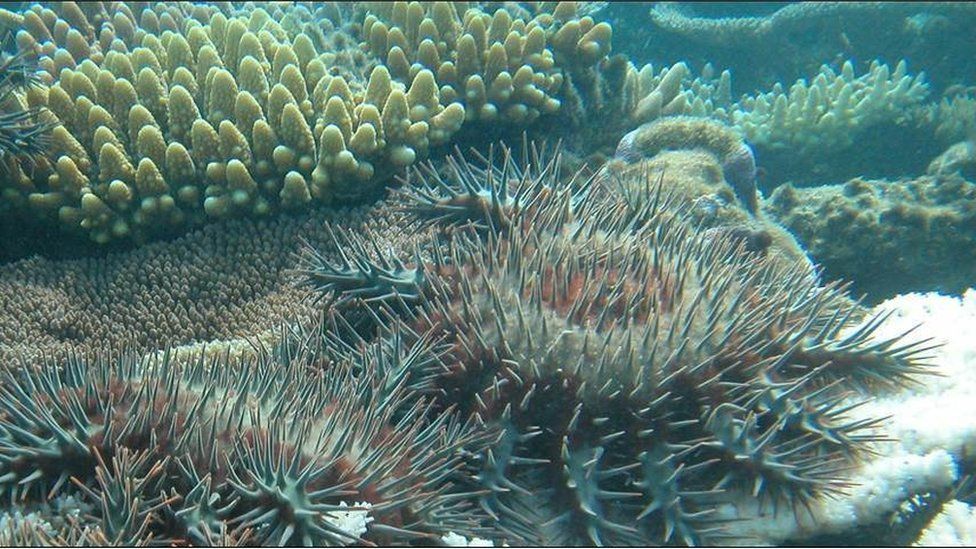Starfish-killing robot close to trials on Great Barrier Reef
- Published

An autonomous starfish-killing robot is close to being ready for trials on the Great Barrier Reef, researchers say.
Crown-of-thorns starfish have have been described as a significant threat to coral.
The Cotsbot robot, which has a vision system, is designed to seek out starfish and give them a lethal injection.
After it eradicates the bulk of starfish in a given area, human divers can move in and mop up the survivors.
Field trials of the robot have begun in Moreton Bay in Brisbane to refine its navigation system, Queensland University of Technology researcher Matthew Dunbabin told the BBC.
There are no crown-of-thorns starfish in Moreton Bay but once the navigation has been refined, the robot will be unleashed on the reef.
"Later this month we begin deploying the robot in the Great Barrier Reef to evaluate our state-of-the-art vision-based crown-of-thorns starfish (COTS) detection system," he said.
"Over the next five months we plan to progressively increase the level of autonomy the robot is allowed, leading to autonomous detection and injection of the starfish."
The technology has two key components - an image recognition system and the robot submersible.
"The core of the detection is a state-of-the-art computer vision and machine learning system," Mr Dunbabin said.
"This system has been trained to recognise COTS [crown-of-thorns starfish] from among a vast range of corals using thousands of still images of the reef and videos taken by COTS-eradicating divers."
Since the 1960s, the movement of nutrients from the land into the sea has meant that starfish numbers are growing and destroying large areas of reef, the researchers said.
- Published12 August 2015
- Published12 August 2015
- Published8 June 2015